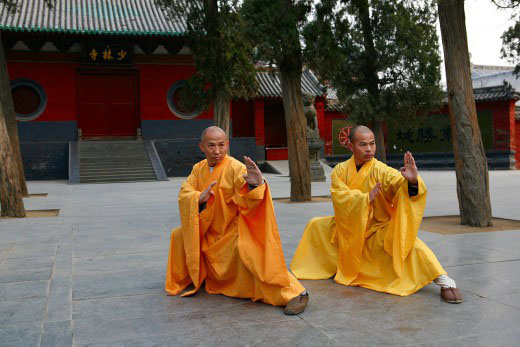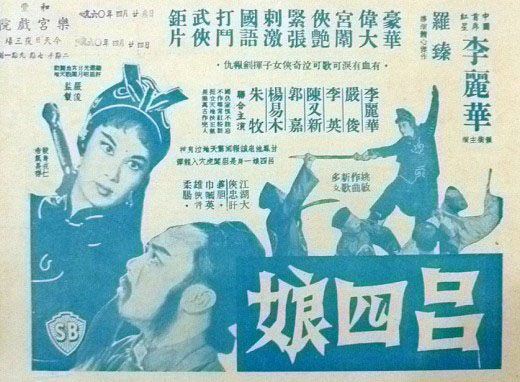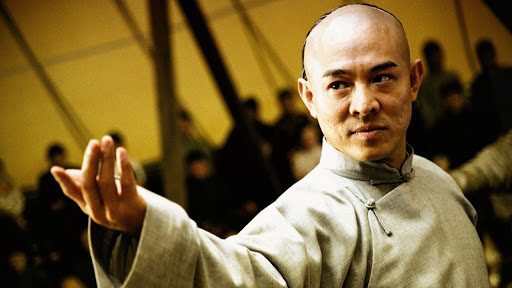[ad_1]
Written by: Staff Report
Posted on: March 20, 2020 |  | 中文
| 中文
Michelle Yeoh as Shu Lein in Crouching Tiger, Hidden Dragon
One of the first things that come to people’s minds when thinking about China in popular culture are martial art films. Audiences who watched these films as children, would often emulate Jackie Chan or Jet Li, karate-chopping each other and shrieking in unintelligible sounds. But Martial Arts films are one of the oldest genres ever produced in China, and they reveal a significant amount about the quintessential Chinese hero.
Wuxia comes from the words ‘wǔ’ meaning ‘armed’ or ‘military’, and xiá, which means ‘hero’ or vigilante (which is not gender specific). Although it is known as a genre, wuxia comes from a long tradition of Chinese literature, starting from the Warring States (772-481 BC), but gaining prominence during the Han Dynasty (206-220 BC).
The stories talked of men who wandered in common clothes, who served as private assassins with a strict moral code. Although researchers have tried to translate the topic into English, in reality there is nothing that can accurately capture the action, romance and fantasy of wuxia literature. The closest thing to a wuxia warrior is a knight-errant, a wandering knight in search of chivalrous adventures. It is very close to the idea of the Japanese Samurai, but wuxia is very deeply seeped in spiritual elements then the Samurai.
Wuxia films originated in the 1920s in Shanghai, when filmmakers were inspired by realistic, historical Chinese films and Western adventure films starring Errol Flynn, which would be screened in Shanghai theatres. It relied on elaborate stunts using wires and acrobatics, and the storylines were set in ancient China. Initially, wuxia films were banned in the 1930s for promoting superstition as China was trying to modernize. But years later, it came back into fashion to mark the return of Chinese values and ethics on cinema screens.
Perhaps the most popular wuxia film is Taiwanese director Ang Lee’s “Crouching Tiger, Hidden Dragon (2000)”, which was one of the most acclaimed foreign films of its time made by an English studio (whose records have only recently been beaten by other foreign language films). The story begins with retired warrior Li Mu Bai giving the all-powerful sword of Green Destiny to his love interest Shu Lien. Green Destiny is stolen on its way to safe-keeping, and Li undergoes a personal and spiritual journey to retrieve it and bring peace to himself.
Although such films were made in China at the time, this was the first film intended to introduce the genre to American audiences on a grand scale. Film critic Roger Ebert lauds the film for being exhilarating, moving and sometimes silly, which is not unlike its Kung Fu counterpart.
Kung Fu movies differ slightly from wuxia, focusing more on realistic settings and hand-to-hand combat. Audiences were tired of cheapening tricks and artificial special effects, craving something more reflective of their time. The first Kung Fu film was made in 1938, about the adventures of real-life wuxia Fong Sai-yuk (Fang Shiyu in Pinyin). But one of the most popular Kung Fu filmmakers in China was Wong Fei Hung, who became something of a cultural legend for his contribution to Chinese cinema. He was known for being disciplined, stern but also a very skilled martial artist, who went on to inspire so many others to practice the art of Kung Fu.
In comparison to Wong, the charismatic and self-taught Kung Fu actor Bruce Lee broke out in Hong Kong cinema with films like “Enter the Dragon (1973)” and “Fist of Fury (1972)”, which was exported to Hollywood as a Kung Fu Craze. When Lee died in 1978, actors and stuntmen Jackie Chan and Sammo Hung rose to fame for their Kung Fu comedies, merging the dance and combat taught at the Peking Opera school with the theatrics of Cantonese opera.
To this date, martial arts comedies haves been popular in both China and Europe because of its ability to take on drama, romance, fantasy, history in one go. One could even go so far to say that these films helped pave the way for China to be taken seriously by international audiences as a growing film industry, with insightful and interesting stories to share.
You may also like:
[ad_2]
Source link






